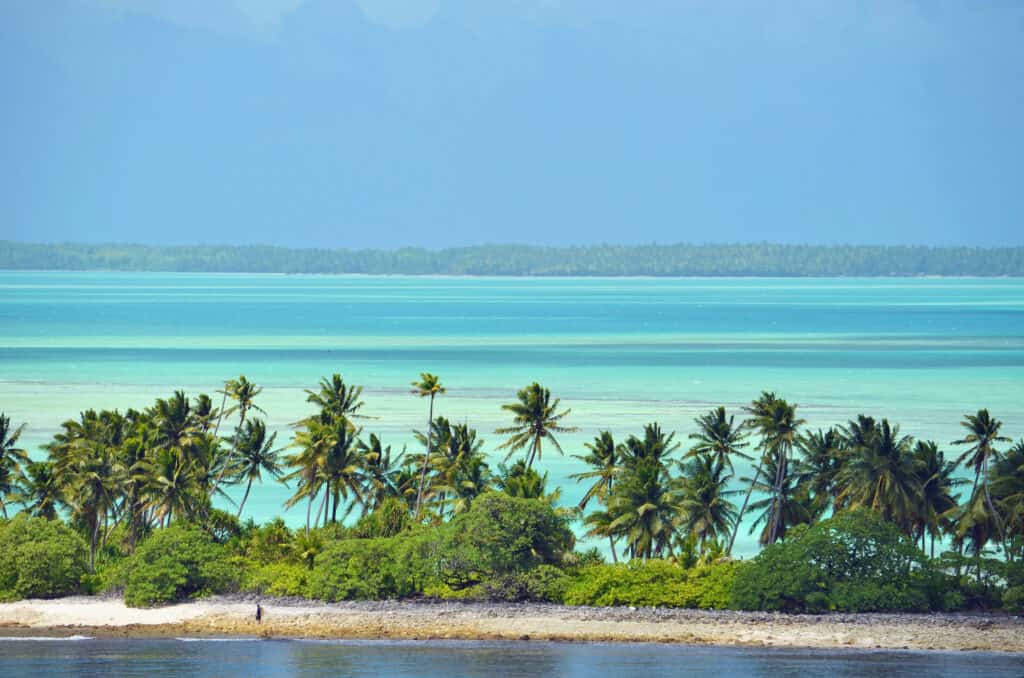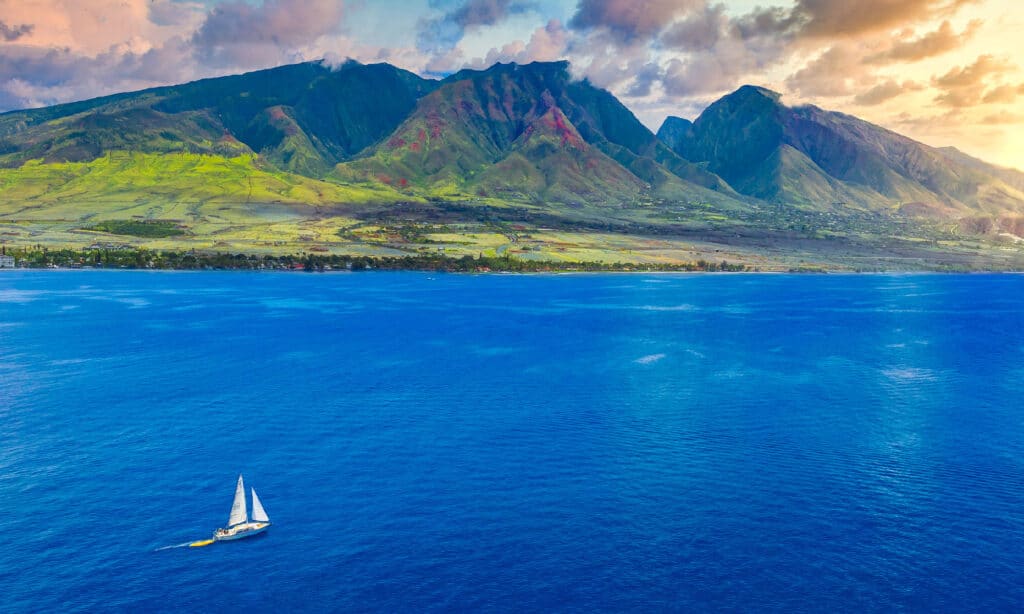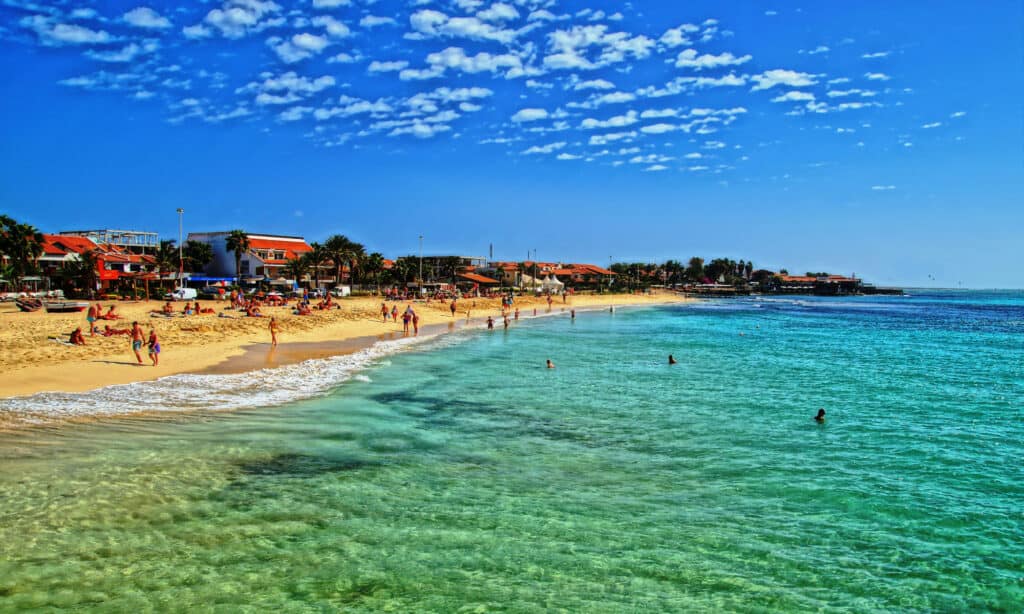Snakes are fascinating animals that help keep the ecosystem in balance. However, while you can find them widely distributed across the world, they aren’t found everywhere. In fact, several Pacific islands are completely snake-free — including the four islands (or groups of islands) below.
Whether you’re afraid of snakes and looking for your next Pacific island vacation or just interested in learning more about these interesting critters, we have all your answers to snake-free islands below. Ready to learn more? Let’s dive in!
Snake-Free Islands in the Pacific Ocean
Believe it or not, there are several islands that are snake-free in the Pacific Ocean. While most of these are completely snake-free, some, such as Nauru, have had reports of snakes. However, because these are considered recently introduced species, you’ll still find these islands on this list.
Ready to learn more about the snake-free islands of the Pacific? Keep reading!

Five main islands or island groups are free of snakes in this part of the world.
©iStock.com/mihtiander
New Zealand
The islands of New Zealand can be found off the coast of Australia. There are two main land masses: the North Island (Te Ika-a-Māui) and the South Island (Te Waipounamu). However, this country also has an additional six hundred smaller islands.
Because of their vastness and remoteness, the New Zealand islands are considered the last habitable landmass to be inhabited and settled by humans. No surprise snakes haven’t made their way here yet! The first humans, the Polynesians, began to settle the islands between the 13th and 14th centuries. Here, they developed the Māori culture that is still flourishing today.
Because snakes have never been on the islands of New Zealand, the animals native to the country have never learned how to respond to them. This means that there are no natural predators of snakes here, either. As a result, if snakes were to invade the islands, it could have a huge negative impact on the native flora and fauna. Snakes aren’t allowed anywhere in New Zealand to prevent this from happening. Zoos don’t have snake exhibits, and you can’t keep snakes as pets!
However, this doesn’t mean that New Zealand is home to other types of reptiles. Like many other islands on this list, what New Zealand lacks in snakes, it makes up for in many lizards, geckos, and more!
Nauru
You won’t have to venture too far to find our next island on this list. Nauru is a small island country around 2,800 miles north of New Zealand. While it is a fraction of the size, its history is much older, with human settlement dating back to 1000 BC. That’s more than 2,000 years before New Zealand was settled! There’s little known about the earliest days of Nauru. However, many scientists believe the country went through a long period of isolation from the outside world. This shows through the unique language and culture of the native people.
There are many interesting facts about Nauru. For one, its native people excelled in aquaculture long before many other places in the world. The tribes here, which were twelve in total, would catch young milkfish and help them adapt to freshwater. Then, they would release them into a nearby body of water and raise them as a constant food source. Nauru is also one of the native snake-free islands of the Pacific Ocean.
This only counts for the land, however. There are species of sea snakes off the coats of Nauru, and there is a potentially new slithering addition to the island of Nauru itself. In recent years, there seems to be a potential snake invader: the Brahminy blindsnake. However, this is not a native species, and sightings aren’t as common as they are in places known for having snake populations.
Thankfully, the Brahminy blindsnake isn’t a strong predator like some other species of snakes may be considered. As a result, their impact on the local environment isn’t as harmful as it could be.

There have been reports of the Brahminy blindsnake appearing on the island of Nauru, although it’s still considered snake-free.
©Radiant Reptilia/Shutterstock.com
Kiribati
Kiribati is a small island country that sits right on the area where the International Date Line and the Equator collide. This makes it the only country in the world in all four hemispheres. It’s also one of only a few countries without any snakes.
The Kiribati islands are the oldest on this list so far, with human settlements dating back to 3,000 BC. As a result, it comes as a surprise that, even today, more than 5,000 years later, the islands are still snake-free. While some other countries have sea snakes that exist off the coast, this is rare in the Kiribati islands.

American captain Edmund Fanning of the American ship Betsy was the first recorded mariner to sight the atoll. Hence, it was named for him.
©iStock.com/EvaKaufman
Tuvalu
Tuvalu is just a little way south of Kiribati. It’s made up of just nine small islands, making it the fourth smallest country in the entire world. Like Kiribati and the other islands on this list, there are no terrestrial snakes on the islands of this country. However, there are a few sea snakes to be found. Despite having no terrestrial snakes, there is actually a non-currency coin in Tuvalu with a snake on it. This is in commemoration of one of its sea snake species.
There is a chance that Tuvalu’s snake-free status could change in the future. Already, the cane toad has become an invasive species. As a result, it’s possible that a snake could eventually find its way to the island. It’s possible that one already has; it just hasn’t been spotted yet.
How Are Some Islands Snake-Free?
Several events need to occur — or rather, not — for an island to be snake-free. Many of the islands in the world, including those on this list, have never had snakes. As a result, while a mass snake extinction can be the cause, that usually isn’t the case. Instead, there are usually two steps to an island being snake-free.
First, no snakes can have evolved on the island. Unlike continental countries that can share species, islands are less likely to share species with the mainland. As a result, so long as no species have evolved on the island, it will remain snake-free.
For the most part.
There is a chance of invasive species. Although no land connects these snake-free Pacific islands to the mainland, there is the ocean itself. Several species of sea snakes exist in the Pacific Ocean, as well as many land snakes that may swim over to the islands depending on the distance. As a result, this small change could lead to the end of a snake-free history for islands. However, it’s unlikely, which is why so many Pacific islands are still snake-free today.

Snakes have not evolved on or invaded many islands in the Pacific Ocean.
©iStock.com/Jonathan Ross
Are There Other Places in the World With No Snakes?
Typically, you can expect to find snakes in all of the warmer continental areas of the world. This includes the mainlands of every continent except for Antarctica. That’s right — even Australia has snakes! Some other areas where you won’t find snakes include colder islands such as Greenland and Iceland. You also won’t find snakes on the Cape Verde islands or even in Ireland!

Cape Verde in the Atlantic is also a snake-free island and some other areas.
©iStock.com/Iacob MADACI
The photo featured at the top of this post is © ian woolcock/Shutterstock.com
Discover the "Monster" Snake 5X Bigger than an Anaconda
Every day A-Z Animals sends out some of the most incredible facts in the world from our free newsletter. Want to discover the 10 most beautiful snakes in the world, a "snake island" where you're never more than 3 feet from danger, or a "monster" snake 5X larger than an anaconda? Then sign up right now and you'll start receiving our daily newsletter absolutely free.
Thank you for reading! Have some feedback for us? Contact the AZ Animals editorial team.






